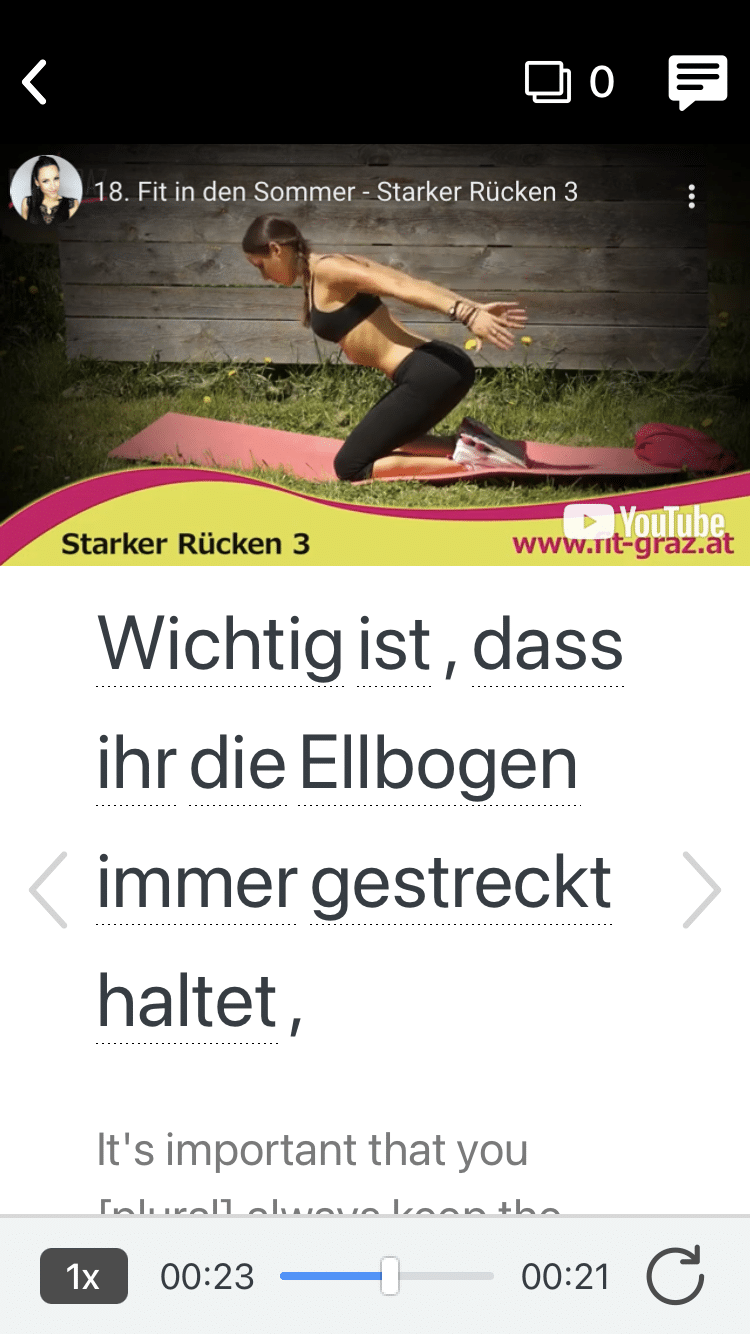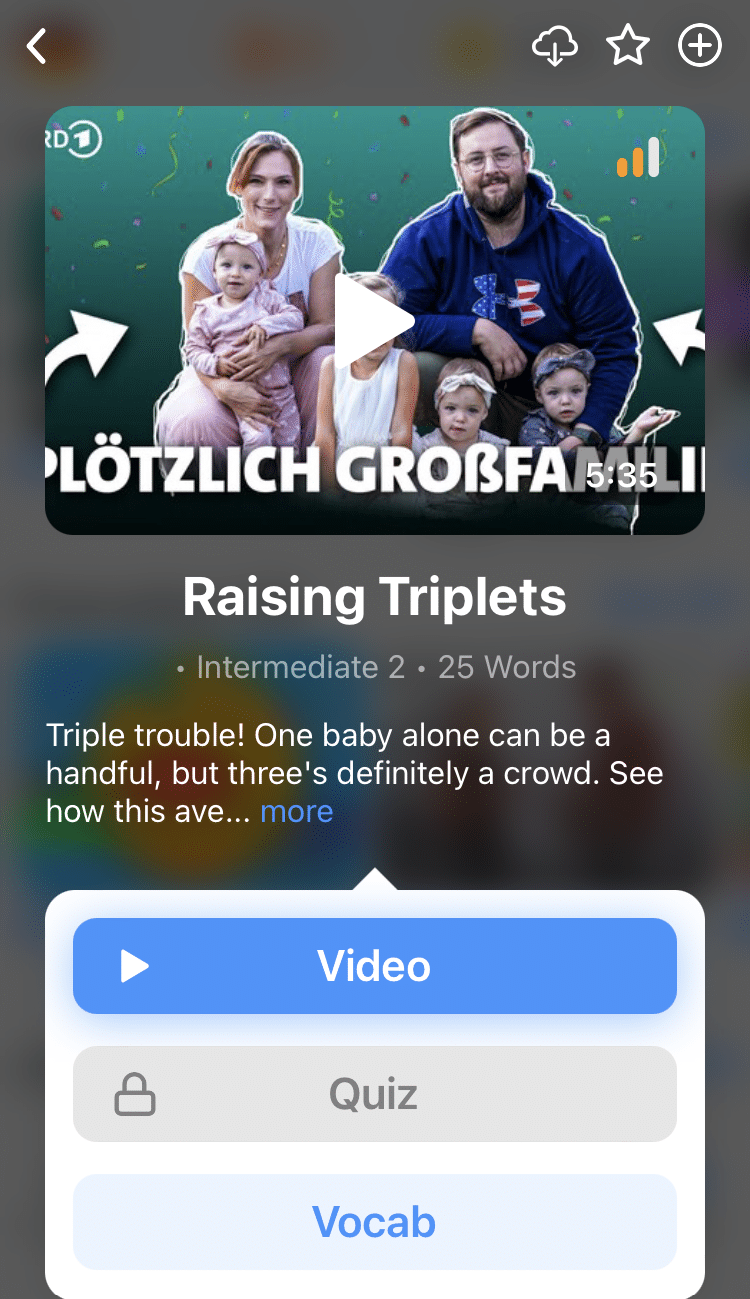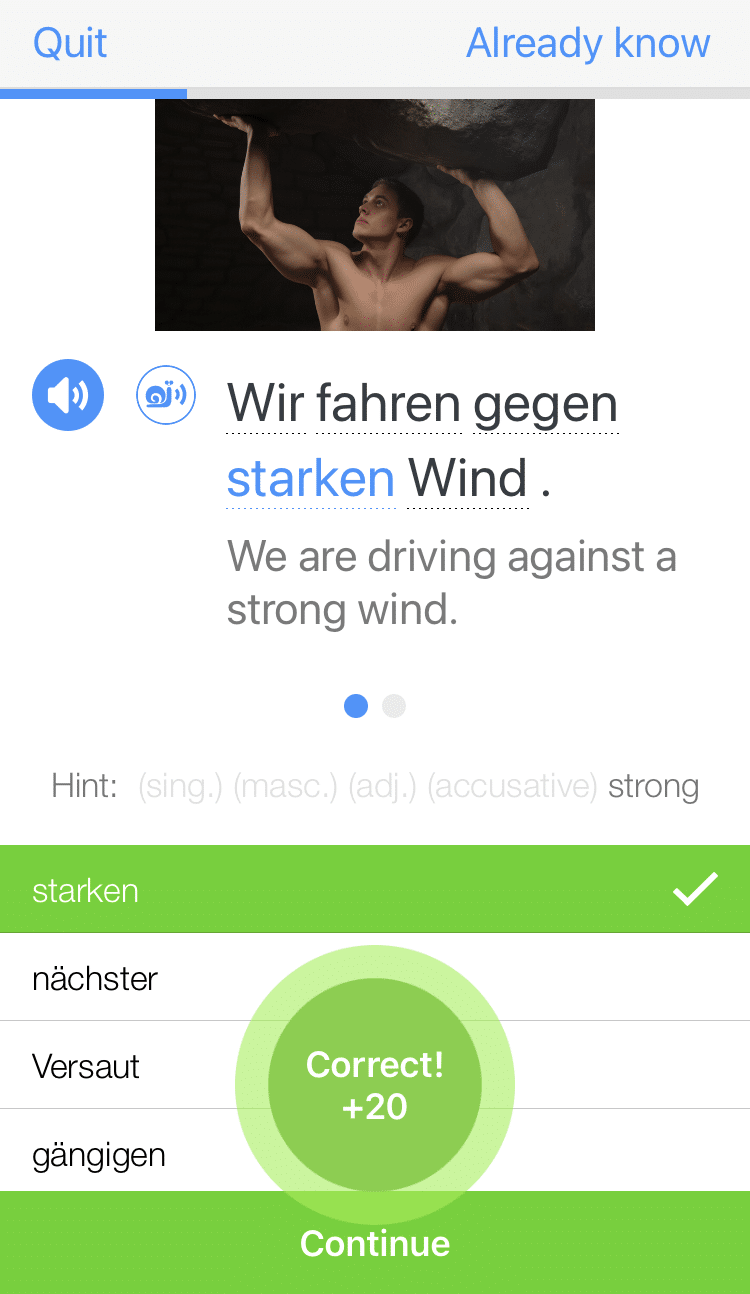
Basic German Suffixes Every Learner Needs to Know
Suffixes are a big part of the German language. They’re literally everywhere, so you really can’t survive without them if you’d like to get anywhere with German grammar.
That’s why you should start learning what they are and how they work, ASAP!
Here’s a quick guide on the most essential German suffixes.
Contents
- What is a Suffix in German?
- Suffixes for Forming Nouns
- Suffixes for Forming Adjectives and Adverbs
- And One More Thing...
Download: This blog post is available as a convenient and portable PDF that you can take anywhere. Click here to get a copy. (Download)
What is a Suffix in German?
A suffix is an addition to the end of a word that adds or alters its meaning, adds context or changes its part of speech.
In English, our suffixes include “-ly,” “-some,” “-ful,” “-ing” and so forth.
The German language has a very similar system, with some very similar sounding suffixes (great news for you German language learners!). In both English and German, the suffixes are added directly after the affected word with no space in between–very slight alterations to the root word may be made.
Suffixes for Forming Nouns
These suffixes can be added to verbs, adjectives or other nouns. Some suffixes may also change the gender of the original noun.
–chen
This suffix is known as a diminutive, making something a “smaller version” of itself. When added to nouns, it’s meant to give it a more endearing “cute” quality. Regardless of the gender of the noun beforehand, adding –chen to the end makes it neuter. It also sees no change between the singular or plural forms.
- das Pferd (horse) → das Pferdchen (little horse)
- der Teller (plate) → das Tellerchen (little plate)
- die Idee (idea) → das Ideechen (itty bitty idea)
If there is an a, o or u in the first syllable of the word, you usually change it into an umlaut when adding -chen:
- das Haus (house) → das Häuschen (little house)
- die Torte (cake) → das Törtchen (little cake)
- der Hund (dog) → das Hündchen (little dog)
–e
This is a common ending for feminine nouns. It may also be used to form nouns from an adjective and verb, with some possible alterations to the root word (such as the addition of an umlaut or a vowel change).
- stark (strong) → die Stärke (strength)
- sprechen (to speak) → die Sprache (speech)
- breit (wide) → die Breite (width)
–heit / –keit
These two suffixes are very similar to each other. They often turn an adjective into its respective abstract noun. A close English equivalent would be “-ness.” Handily, they are always feminine gender.
- frei (free) → die Freiheit (freedom)
- gesund (healthy) → die Gesundheit (health)
- freundlich (friendly) → die Freundlichkeit (friendliness)
- einsam (lonely) → die Einsamkeit (loneliness)
–i
Similar to -chen, -i is a common suffix that acts as a diminutive and adds an endearing, affectionate tone to whatever is being discussed. No gender change is required with the addition of -i. It’s common for a part of the root word to be cut when -i is added.
- der Vater (father) → der Vati (dad, daddy, papa)
- Schatz (sweetheart, treasure) → Schatzi (little treasure, sweetie)
–ie
A common suffix that can be equated to the English “-y.” It’s a frequently-used suffix when discussing fields of study and sciences.
- die Chemie (chemistry)
- die Theorie (theory)
- die Demokratie (democracy)
–ist
An equivalent to the English “-ist.” It’s commonly used to denote a practitioner of a certain craft. The root word is typically Latin or Greek in origin.
- der Pianist (male pianist)
- der Polizist (male police officer)
- der Spezialist (male specialist)
–graphie
An equivalent to the English “-graphy.” Sometimes, it may be spelled as -grafie.
- die Photographie (photography)
- die Orthographie (orthography)
- die Lithographie (lithography)
–lein
Another diminutive suffix that works similarly to -chen, but is often only used for words ending in –ch. Using it for other words will sound antiquated. Like -chen, it transforms the noun into the neuter gender.
- der Tisch (table) → das Tischlein (little table)
- das Buch (book) → das Büchlein (little book)
- der Fisch (fish) → das Fischlein (little fish)
–ling
A suffix that suggests the bearing of a certain quality, or to indicate one is a follower of or connected to a certain practice or feature.
- Haupt (main, head) → der Häuptling (chief)
- die Liebe (love) → der Liebling (beloved)
- schwach (weak) → der Schwächling (weakling)
–ologie
Equivalent to the English “-ology,” used in reference to fields of study. The nouns are always feminine in gender.
- die Psychologie (psychology)
- die Biologie (biology)
- die Ideologie (ideology)
–tion : “-tion”
Equivalent to the English “-tion.” The root words are typically derived from Latin. They are also always feminine.
- die Kommunikation (communication)
- die Produktion (production)
- die Information (information)
–ung
A common suffix that creates nouns from verbs. Yet again, words ending in -ung are always feminine!
- ordern (to order) → die Ordnung (order)
- lösen (to solve) → die Lösung (solution)
- zahlen (to pay) → die Zahlung (payment)
Though it seems like there is a lot to learn, the more you see and hear these suffixes used in context the easier they will become. But to speed things up a little, you could try looking out for them on FluentU.
FluentU takes authentic videos—like music videos, movie trailers, news and inspiring talks—and turns them into personalized language learning lessons.
You can try FluentU for free for 2 weeks. Check out the website or download the iOS app or Android app.
P.S. Click here to take advantage of our current sale! (Expires at the end of this month.)
Suffixes for Forming Adjectives and Adverbs
There are many German suffixes used to indicate that words are adjectives and adverbs. Some are quite easy to interpret, as many are cognates of English suffixes.
–arm
A suffix that suggests the lacking of a quality. It can be translated to mean “low.”
- fett (fat) → fettarm (low-fat)
It can also be used with lots of nouns to turn into an adjective that describes the lack of that thing:
- das Wasser (water) → wasserarm (arid)
- die Faser (fiber) → faserarm (low-fiber)
- das Blut (blood) → blutarm (low-blood, anemic)
–artig
A suffix added to nouns or adjectives to suggest they are of a certain manner, behavior or appearance. The equivalent would be “-like” in English.
- der Affe (ape) → affenartig (apelike)
- der Blitz (lightning) → blitzartig (lightning-fast)
- der Baum (tree) → baumartig (arboreal)
–bar
When added to nouns or verbs, this suffix implies possession or capability of a certain trait, feature or action. A close English equivalent is “-able.”
- machen (to do) → machbar (doable)
- essen (to eat) → essbar (edible)
- danken (to thank) → dankbar (thankful)
–en / –n
When added to a noun, this suffix suggests that something is made of a certain substance or quality. The suffix –n is added if the modified word is pluralized and ends in R, or if R is already the last letter of the word.
–fest
When added to a noun or verb, this suffix suggests that there’s a stability or resistance against it. A close English equivalent is the suffix “-proof.”
- das Wasser (water) → wasserfest (waterproof)
- das Feuer (fire) → feuerfest (fireproof)
–frei
Equivalent to the English suffix “-free,” it forms an adjective that indicates that something is free of and lacks a certain feature or quality.
- die Sorgen (care, worries) → sorgenfrei (carefree)
- der Zucker (sugar) → zuckerfrei (sugar-free)
- der Alkohol (alcohol) → alkoholfrei (alcohol-free)
–haft
Similar to -artig, this is a suffix that further exaggerates the possession of a described feature or trait.
- das Beispiel (example) → beispielhaft (exemplary)
- das Kind (kid) → kindhaft (childlike)
- der Meister (master) → meisterhaft (masterful)
–ig
Similar to -artig and -haft, this suffix suggests something bearing a quality or present feature.
- die Sonne (sun) → sonnig (sunny)
- der Nebel (fog) → nebelig (foggy)
- der Knack (snap) → knackig (crunchy)
–isch
Equivalent in function to the English suffix “-ish,” this suffix suggests something is of a certain origin or somewhat bears a certain trait. It can also suggest that one takes on the manner of something.
- Kanada (Canada) → kanadisch (Canadian)
- das System (system) → systematisch (systematic)
- das Kind (kid) → kindisch (childish)
–iv
Equivalent in function to the English suffix “-ive.” A very basic adjective-denoting suffix.
- komparativ (comparative)
- passiv (passive)
- adaptiv (adaptive)
–leer
Like -arm and -frei, this suffix suggests that an object is without a certain quality or feature, or is simply absent. It’s equivalent to the English suffix “-less.”
- der Inhalt → inhaltsleer (void of content, meaningless)
- die Menschen → menschenleer (deserted, empty)
–lich
Equivalent in function to the English suffix “-like.” It suggests the presence or embodiment of a characteristic, or that something is somehow involved with the root word.
- der Freund (friend) → freundlich (friendly)
- das Glück (fortune, joy) → glücklich (lucky, happy)
- das Ende (end) → endlich (finally)
–los
Very similar to -leer, this suffix can also be equated to the English suffix “-less.” When added to a noun, it suggests the absence of a quality or thing.
- die Sprache (speech) → sprachlos (speechless)
- die Zeit (time) → zeitlos (timeless)
- der Sinn (point, meaning) → sinnlos (meaningless)
–mal
An adverb-forming suffix that suggests a quantity of times or occurrences. It’s commonly added to numbers.
- zwei (two) → zweimal (twice)
- hundert (hundred) → hundertmal (hundred times)
- manchmal (sometimes)
–reich
Meaning “rich,” this suffix indicates that something is full of a certain trait or feature.
- das Eiweiß (protein) → eiweißreich (protein-rich)
- die Hilfe → hilfreich (helpful)
- die Farbe → farbreich (colorful / color-rich)
–sam
Equivalent to the English suffix “-some,” this common adjective suffix describes the presence of a certain quality or ability.
- die Arbeit (work) → arbeitsam (industrious)
- die Sorge (care) → sorgsam (careful)
- die Furcht (anxiety) → furchtsam (anxious)
–voll
Equivalent to the English suffix “-ful,” this suffix suggests the abundance of a quality or item.
- das Wunder (wonder) → wundervoll (wonderful)
- die Angst (fear) → angstvoll (fearful)
- der Rand (edge, verge) → randvoll (brimming)
–würdig
Meaning “worthy,” this suffix suggests that an object is deserving of a certain trait or action. It’s similar in meaning to the English suffix “-able.”
- der Glaube (belief) / glauben (to believe) → glaubwürdig (believable, credible)
- die Anbetung (adoration) → anbetungswürdig (adorable, admirable)
- die Frage (question) / fragen (to ask) → fragwürdig (questionable)
By knowing these suffixes, your knowledge and usage of German vocabulary will increase ten-fold (or, as I’d say in German, zehnmal )!
And One More Thing...
Want to know the key to learning German effectively?
It's using the right content and tools, like FluentU has to offer! Browse hundreds of videos, take endless quizzes and master the German language faster than you've ever imagine!
Watching a fun video, but having trouble understanding it? FluentU brings native videos within reach with interactive subtitles.
You can tap on any word to look it up instantly. Every definition has examples that have been written to help you understand how the word is used. If you see an interesting word you don't know, you can add it to a vocabulary list.
And FluentU isn't just for watching videos. It's a complete platform for learning. It's designed to effectively teach you all the vocabulary from any video. Swipe left or right to see more examples of the word you're on.
The best part is that FluentU keeps track of the vocabulary that you're learning, and gives you extra practice with difficult words. It'll even remind you when it’s time to review what you’ve learned.
Start using the FluentU website on your computer or tablet or, better yet, download the FluentU app from the iTunes or Google Play store. Click here to take advantage of our current sale! (Expires at the end of this month.)







